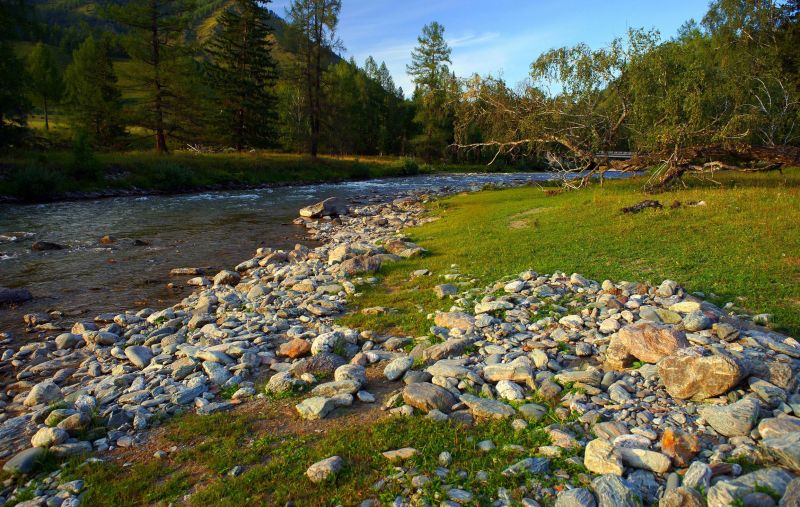‘Brazil Nut Effect’ Helps Explain How Rivers Resist Erosion
Published on by Water Network Research, Official research team of The Water Network in Academic
The surface of riverbeds tend to be covered with relatively large rocks, a protection against erosion. Penn geophysicists used a concept from granular physics to explain why this is the case.

Representative image, Source: PxHere
Pop the top off a can of mixed nuts and, chances are, Brazil nuts will be at the top. This phenomenon, of large particles tending to rise to the top of mixtures while small particles tend to sink down, is popularly known as the “Brazil nut effect” and more technically as granular segregation.
Look down at the top of a riverbed and it’s easy to draw a parallel: the top of a riverbed is typically lined with larger cobbles, while finer sand and small gravel particles make up the deeper layers.
Physicists concerned with particle movement have given a lot of thought to the mechanics by which particles sort in these types of scenarios, but that research has not been translated to earth science until now. In a new study, geophysicists from the University of Pennsylvania found that granular segregation helps explain the tendency of riverbeds to be lined by, or “armored” with, a layer of relatively larger particles.
Published in the journal Nature Communications, the findings enhance understanding of how riverbeds form, with implications for how rivers may also erode. But the research also makes new insights into the fundamental physics of particle segregation, which apply to all sorts of granular materials, from riverbeds and soils to industrial and pharmaceutical substances.
“There has been this granular segregation phenomenon that has been studied for decades,” said Douglas J. Jerolmack, associate professor in the Department of Earth and Environmental Science in Penn’s School of Arts and Sciences, “and then there’s this separate explanation by geologists and engineers about why riverbeds get a coarse layer on the surface, and the two had never met before. Our major contribution here is really taking the granular physics understanding of the segregation of particles — how big particles segregate and move up to the surface — and introducing it to the river problem.”
Jerolmack collaborated on the work with postdoctoral researchers Behrooz Ferdowsi, now at Princeton University; Carlos P. Ortiz, now at Deloitte Consulting; and Morgane Houssais, now at the City University of New York.
Riverbed armoring is seen almost universally and is understood to be a way that rivers prevent excessive erosion.
“We call this armoring because the larger particles are like an armor that protects the riverbed underneath from getting eroded,” Jerolmack said. “If there are big cobbles that are lining the riverbed, then I’ll need a big flood in order to move them.”
Geologists have generally thought that fluid mechanics controls this pattern. The river water would wash away the finer particles, leaving the larger particles behind.
But the Penn-led team recognized that this explanation failed to conceive of the riverbed as a granular system, which would also be subject to the Brazil nut effect, not just the shear force of water.
To see if granular segregation did apply in a fluid system, the researchers turned to a laboratory stand-in for a river: a doughnut-shaped channel filled with large and small spherical particles. The lid of the channel pushes the fluid atop the particles, replicating the flow of a river.
Read full article: Penn News
Read the paper 'River-bed armouring as a granular segregation phenomenon' HERE
Media
Taxonomy
- Hydrology
- River Studies
- River Engineering
- River Restoration
- Hydrology
- Hydrologist